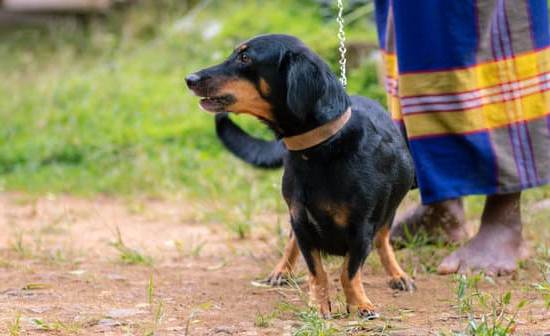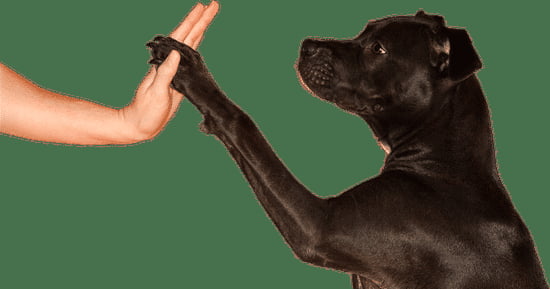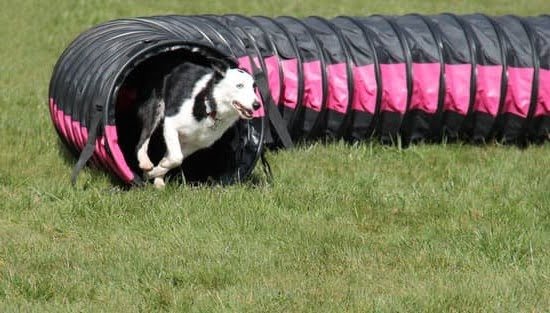Litter box training is a method of housebreaking dogs that involves teaching them to eliminate in a designated indoor area, such as a litter box or a potty pad. While traditionally associated with cats, this method has gained popularity among dog owners who face challenges such as limited outdoor space, allergies, or mobility issues. Litter box training can be particularly beneficial for certain types of dogs and their owners.
One of the key advantages of litter box training is its suitability for small dog breeds. Dogs like Yorkies, Chihuahuas, and Shih Tzus are known to excel in this type of training due to their size and adaptability.
Additionally, toy breeds such as Pomeranians, Maltese, and Papillons can also be successfully trained to use a litter box due to their manageable size. The ability to contain their elimination indoors makes these breeds well-suited for apartment living or environments with limited outdoor access.
Moreover, dog breeds with hypoallergenic coats can also benefit from litter box training. Breeds like Bichon Frises, Italian Greyhounds, and Shih Poos have non-shedding and hypoallergenic coats, making them suitable for individuals with allergies or those who live in apartments where frequent outdoor trips may not be feasible. Litter box training provides an alternative method for these breeds to meet their elimination needs while maintaining a clean and allergen-free living environment.
Overall, litter box training serves as a practical solution for dog owners facing various challenges related to outdoor access or specific health concerns. By exploring the essential characteristics that make certain dog breeds more suitable for this type of training, we can better determine which dogs are more likely to succeed in using the litter box consistently.
In the following sections, we will delve into different factors that contribute to successful litter box training while highlighting specific dog breeds that excel in this method.
Understanding the Key Factors
Litter box training can be a convenient and practical solution for dog owners who may not have access to outdoor spaces or need an alternative potty option. However, not all dog breeds are equally suited for litter box training. Understanding the key factors that contribute to a breed’s suitability can help potential pet owners make informed decisions when choosing a dog for litter box training.
One of the primary factors to consider is a dog’s size. Small-sized dog breeds tend to be more successful in adapting to litter box training. Breeds like Yorkies, Chihuahuas, and Shih Tzus are known for their ability to excel in litter box training due to their manageable size. A smaller dog is generally easier to handle when it comes to using a designated area, such as a litter box, for elimination purposes.
Another important characteristic is the shedding tendency of a breed. Non-shedding dogs, which typically have hypoallergenic coats, can be ideal for owners with allergies or limited outdoor space. Dog breeds like Bichon Frises, Italian Greyhounds, and Shih Poos are examples of hypoallergenic dogs that can be successfully litter box trained. These dogs’ coat types minimize allergens and provide more convenience for owners who may struggle with traditional potty methods.
Apartment living often requires specific considerations when it comes to owning a dog. Breeds that are well-suited for apartment living and have low exercise requirements tend to adapt better to litter box training. The Coton de Tulear, Pugs, and Miniature Schnauzers are good examples of apartment-friendly breeds that can thrive in smaller spaces and learn to use a litter box effectively.
While breed characteristics play an important role in predicting suitability for litter box training, individual personality and temperament should not be overlooked. Each dog is unique, and some individuals within certain breeds may be more receptive to litter box training than others. Regardless of breed, consistency and positive reinforcement are key to successful litter box training. Creating a routine and rewarding desired behavior with treats or praise can help establish the desired habits.
Understanding these key factors can assist dog owners in selecting a breed that is more likely to excel in litter box training. However, it is important to remember that every dog is an individual, and success will depend on various factors including consistency, patience, and positive reinforcement during the training process.
Small Dog Breeds
When it comes to litter box training, small dog breeds have shown a remarkable aptitude for success. These pint-sized pooches possess certain characteristics that make them more suitable for litter box training compared to larger breeds. Among the small dog breeds that excel in litter box training are Yorkies, Chihuahuas, and Shih Tzus.
Yorkshire Terriers, or Yorkies, are known for their intelligence and eagerness to please their owners. These qualities contribute to their trainability when it comes to using a litter box. Yorkies are also naturally clean dogs who dislike soiling their living spaces, making them more inclined to use a designated bathroom area.
Chihuahuas, despite their size, often have confident personalities which aids in their successful litter box training. They can easily be trained to use the litter box due to their natural tendency towards cleanliness. Additionally, since Chihuahuas have tiny bladders and may need frequent potty breaks throughout the day, having a litter box accessible indoors provides convenience for both the dog and the owner.
Shih Tzus also tend to do well with litter box training due to their small size and adaptable nature. These lovable companions are intelligent and eager to please their owners. Their gentle temperament makes them receptive to learning new behaviors such as using a litter box.
Despite the inherent advantages of these small dog breeds for litter box training, it’s important to remember that each individual dog is unique. Some dogs may require additional time and patience during the training process. Consistency is key when introducing any new behavior or routine. With positive reinforcement and plenty of praise and treats along the way, even the most challenging pups can eventually learn successful litter box habits.
Toy Breeds
Benefits of Litter Box Training for Toy Breeds
Litter box training can be particularly beneficial for toy dog breeds due to their small size and limited bladder capacity. Toy breeds such as Pomeranians, Maltese, and Papillons are known for their tiny stature, which often means they have difficulty holding their bladder for extended periods or navigating through tall grass when it’s time to go potty.
Litter box training provides a convenient and accessible solution for these dogs, allowing them to relieve themselves in a controlled environment without the need for outdoor access.
Practical Tips for Litter Box Training Toy Breeds
When litter box training toy breeds, there are several practical tips that can help ensure success. Firstly, it is important to choose an appropriately-sized litter box that is easily accessible to your dog. Keep in mind that toy dogs may have difficulty stepping into high-sided boxes or using large trays, so opt for shallow litter boxes with low sides.
Additionally, introducing your toy breed puppy or adult dog to the litter box gradually can help ease the transition. Start by placing the litter box in a confined area where your dog spends most of their time, such as a playpen or a small room. Encourage them to explore the litter box and reward them with treats or praise when they show any signs of interest or curiosity.
Using positive reinforcement techniques is crucial during the training process. Reward your dog every time they successfully eliminate in the litter box and provide gentle guidance if accidents occur outside of it. Patience and consistency are key when litter box training toy breeds, as it may take some time before they fully understand what is expected of them.
Finding Success with Litter Box Training
While toy breeds may have an easier time adapting to litter box training due to their manageable size, it’s important to remember that each individual dog is unique. Some toy breeds may take to litter box training quickly and effortlessly, while others may require more time and patience. Understanding your dog’s personality, needs, and preferences will help tailor the training process to their specific requirements.
Consistency and positive reinforcement are vital when it comes to successfully litter box training any dog, including toy breeds. Establishing a routine and sticking to it will help your dog develop good habits and reduce the likelihood of accidents. Additionally, praise and rewards for desired behaviors can go a long way in motivating your toy breed to use the litter box consistently.
Non-Shedding Dogs
For dog owners who have allergies or limited outdoor space, litter box training can be a convenient solution. Certain dog breeds with hypoallergenic coats are particularly well-suited for this type of training. These non-shedding dogs not only minimize allergens in the living environment but also adapt well to using a litter box indoors.
One popular non-shedding breed that is often successfully litter box trained is the Bichon Frise. Known for their cheerful and friendly personalities, Bichon Frises are small dogs that require regular grooming to maintain their hypoallergenic coat. Their natural intelligence and willingness to please make them quick learners when it comes to litter box training. Additionally, Bichon Frises have a relatively low exercise requirement, making them well-suited for apartment living and indoor elimination.
Italian Greyhounds are another breed that can be easily trained to use a litter box. These small dogs possess a calm and affectionate nature, which makes them an excellent choice for individuals looking for a companion dog that doesn’t shed.
Despite having an athletic build similar to their larger Greyhound relatives, Italian Greyhounds do not have the same exercise needs and are content with short bursts of activity. This makes them suitable for indoor elimination habits associated with litter box training.
Shih Poos, a cross between Shih Tzus and Poodles, are also among the breeds that can be successfully litter box trained. Their hypoallergenic coat inherited from both parent breeds helps minimize allergic reactions in sensitive individuals.
Shih Poos tend to be intelligent and eager-to-please dogs that respond well to positive reinforcement during training sessions. These qualities make them adaptable when it comes to using a litter box indoors, making them an ideal choice for those with allergies or limited outdoor space.
In summary, non-shedding dogs with hypoallergenic coats like Bichon Frises, Italian Greyhounds, and Shih Poos can be effectively litter box trained. Their small size and low exercise requirements make them suitable for apartment living and indoor elimination. By choosing a dog breed that matches their lifestyle and needs, owners with allergies or limited outdoor space can enjoy the benefits of having a dog while maintaining a clean and allergen-free home environment.
| Dog Breed | Litter Box Training Suitability | Hypoallergenic Coat |
|---|---|---|
| Bichon Frise | Excellent | Yes |
| Italian Greyhound | Good | Yes |
| Shih Poo (Shih Tzu-Poodle mix) | Good | Yes |
Apartment-Friendly Breeds
Living in an apartment can pose unique challenges when it comes to owning a dog. Limited space and lack of a backyard may make traditional housebreaking methods difficult or inconvenient. However, there are certain dog breeds that are well-suited for apartment living and can be successfully litter box trained. These breeds typically have low exercise requirements and adapt well to confined spaces.
One such breed is the Coton de Tulear. Known for their affectionate nature and playful personality, Cotons make excellent companions for apartment dwellers. They have a small-to-medium size which makes them suitable for indoor living. Additionally, Cotons have a low-shedding coat, making them ideal for individuals with allergies or limited outdoor space.
Another apartment-friendly breed is the Pug. Pugs are known for their friendly disposition and love of lounging around the house. They require minimal exercise and are generally happy to curl up on the couch with their owners. Their compact size also makes them easy to accommodate in smaller living spaces.
Miniature Schnauzers are another breed well-suited for apartment living and litter box training. They are intelligent, adaptable, and have moderate exercise needs. Miniature Schnauzers can be easily trained to use a litter box indoors, making them an ideal choice for individuals who live in apartments without immediate access to outdoor areas.
| Breed | Exercise Requirements | Size | Coat Type |
|---|---|---|---|
| Coton de Tulear | Low | Small-to-medium | Low-shedding |
| Pug | Minimal | Small | Short-haired, minimal shedding |
| Miniature Schnauzer | Moderate | Small-to-medium | Double-coated, requires grooming |
It is important to note that while these breeds are generally well-suited for apartment living and litter box training, each dog is an individual with unique personality traits. Consistency and positive reinforcement are key factors in successfully litter box training any dog. It is essential to create a designated area for the litter box and establish a regular routine for your pet. With proper training and care, apartment living can be enjoyable for both you and your furry companion.
Senior Dogs
Benefits of Litter Box Training for Senior Dogs
As dogs age, they may experience a decline in mobility or develop bladder control issues. For senior dogs who struggle with these challenges, litter box training can offer numerous benefits. Litter box training provides a convenient solution for senior dogs to relieve themselves indoors, especially when access to the outdoors may be limited due to health concerns or inclement weather. Additionally, it can help maintain their sense of independence and reduce accidents around the house.
Suitable Breeds for Litter Box Training
While any breed of dog can potentially be litter box trained, certain breeds, such as Labrador Retrievers, Beagles, and Dachshunds, are more prone to mobility or bladder control issues in their senior years. These breeds tend to have a higher risk of developing conditions like arthritis or urinary incontinence as they age. Therefore, litter box training can be especially beneficial for these breeds.
Labrador Retrievers are known for their friendly and loyal nature, but they can also be prone to joint issues such as hip dysplasia or arthritis. Litter box training allows them to eliminate without having to navigate stairs or long distances.
Beagles also benefit from litter box training due to their tendency to develop age-related bladder control problems. As small scent hounds, they are known for their strong sense of smell and tracking abilities. However, this breed’s size and potential health concerns make them prime candidates for litter box training in their senior years.
Dachshunds often experience back problems as they age due to their long bodies and short legs. These issues can affect their mobility and ability to reach outdoor potty areas efficiently. Litter box training provides an accessible option for these beloved companion dogs.
Tips for Successful Litter Box Training with Senior Dogs
Litter box training senior dogs requires patience, consistency, and understanding. Here are some tips to help ensure success:
- Choose the right litter box: Opt for a low-sided litter box that is easy to access for dogs with mobility issues, and consider using puppy pads or waterproof liners underneath to catch any accidents.
- Place the litter box in a convenient location: Position the litter box in an area of the house where your senior dog spends most of their time or has easy access, such as near their bed or a frequently used room.
- Create a routine: Establish a consistent schedule for feeding and potty breaks to help your senior dog adjust to their new routine. Take them to the litter box after meals and before bedtime.
- Use positive reinforcement: Reward your senior dog with praise, treats, or gentle physical affection when they successfully use the litter box. This positive reinforcement helps strengthen their association between using the litter box and receiving praise.
- Be patient and understanding: Senior dogs may take longer to learn new behaviors, so it’s important to remain patient throughout the training process. Avoid punishment or scolding if accidents occur, as this can create anxiety and inhibit successful training.
By implementing these tips and considering your senior dog’s specific needs, you can make litter box training a positive experience that benefits both you and your aging canine companion.
Individual Personality
While breed characteristics play a significant role in determining which dogs are more suitable for litter box training, it is important to recognize that individual dog personality and temperament also play a crucial role in the success of this training method. Just because a particular breed is generally known to be well-suited for litter box training does not guarantee that every individual dog of that breed will excel in it.
In order to successfully litter box train a dog, consistency is key. Dogs thrive on routine and structure, so it is important to establish a consistent schedule for taking them to their designated litter area. This helps them understand when and where they are expected to eliminate.
Additionally, positive reinforcement is essential in reinforcing desired behaviors during the training process. Showering your dog with praise, treats, or rewards whenever they use the litter box correctly will encourage them to associate this behavior with positive outcomes.
It is also important to consider that some dogs may have previous experiences or trauma that can affect their ability to be successful in litter box training. For example, a rescued dog that has been previously kept outdoors may find it challenging to transition to using a litter box indoors. Patience and understanding are needed in such cases, as these dogs may require extra time and guidance during the training process.
Overall, while certain breeds may have traits that make them more suitable for litter box training, every dog is unique, and their individual personality and temperament should be taken into account when implementing this training method. With consistency, positive reinforcement, and patience tailored to each dog’s specific needs, litter box training can be successfully accomplished regardless of breed.
Common Challenges and Solutions
During the process of litter box training, there are several common challenges that dog owners may encounter. However, with some practical tips and solutions, these challenges can be overcome to ensure a successful training experience.
One common challenge is getting the dog to consistently use the litter box. Some dogs may resist using the litter box because they are unfamiliar with it or simply prefer to use other areas of the house as their bathroom. To address this challenge, it is important to make the litter box an appealing and comfortable place for the dog.
Place the litter box in a quiet and easily accessible location, away from any distractions or high-traffic areas. Use positive reinforcement techniques, such as treats and praise, when the dog uses the litter box correctly. Additionally, regularly clean and maintain the litter box to ensure that it remains clean and inviting for your dog.
Another challenge that may arise during litter box training is accidents outside of the designated area. This could be due to confusion or inconsistency in training methods. It is important to establish a clear boundary and consistently reinforce it with positive reinforcement. If accidents occur, do not punish or scold your dog as this may create fear or anxiety around using the litter box. Instead, clean up any messes promptly and provide gentle redirection towards the designated area.
Some dogs may also show a preference for certain types of surfaces or textures over others when it comes to eliminating waste. This can present another challenge during litter box training. To address this issue, experiment with different types of litters to find one that your dog prefers.
Some dogs may prefer clay-based litters while others may prefer shredded paper or grass-like alternatives. By finding a litter that mimics their preferred surface texture, you can increase their likelihood of using the litter box consistently.
Conclusion
In conclusion, litter box training can be a beneficial option for dog owners who have specific needs and circumstances that make outdoor potty training challenging. By exploring the key factors and characteristics that make certain breeds more suitable for litter box training, we have identified several categories of dogs that tend to excel in this method.
Small dog breeds such as Yorkies, Chihuahuas, and Shih Tzus are known to do well with litter box training due to their size and adaptability. Similarly, toy breeds like Pomeranians, Maltese, and Papillons can be successfully trained because their manageable size makes it easier for them to use a litter box.
For owners with allergies or limited outdoor space, non-shedding dogs with hypoallergenic coats like Bichon Frises, Italian Greyhounds, and Shih Poos can be a great fit for litter box training. These breeds not only provide relief from allergy symptoms but also offer the convenience of using a litter box indoors.
Litter box training is not limited to specific breeds or sizes; it can also benefit aging dogs who may struggle with mobility or bladder control issues. Labrador Retrievers, Beagles, Dachshunds, and other senior dogs can find comfort and maintain their independence through this method.
It’s important to note that while breed characteristics play a role in litter box training success, individual dog personality and temperament should also be considered. Consistency and positive reinforcement are key components of effective training regardless of breed. It is crucial to match the training method to the individual dog’s needs and lifestyle to ensure success.
Frequently Asked Questions
Can a dog be trained to go in a litter box?
While it is not very common, it is possible to train a dog to go in a litter box. This method of house-training is more commonly associated with cats, but some small dog breeds can be successfully trained to use a litter box as well. However, it may require more patience and consistency compared to training them to go outside.
Dogs are instinctually inclined to relieve themselves outdoors, so teaching them to use an indoor litter box goes against their natural instincts. It often involves using positive reinforcement techniques such as rewards and praise for using the litter box correctly.
What pets are easiest to litter train?
Small mammals such as rabbits and guinea pigs are often considered the easiest pets to litter train. These animals are naturally clean and prefer to eliminate waste in specific areas of their enclosure or habitat.
With proper guidance, they can quickly learn to use a designated litter area within their enclosures. By placing appropriate bedding or absorbent materials in this area and ensuring it remains clean, these pets will instinctively use it for eliminating waste.
What dogs are hard to toilet train?
Some dog breeds can be more challenging when it comes to toilet training due to several factors. For example, toy breeds such as Chihuahuas and Yorkshire Terriers are known for having smaller bladders and higher metabolism rates compared to larger dogs, which means they need more frequent bathroom breaks. Additionally, certain breeds may be more stubborn or independent-minded, making consistent training efforts essential.
Similarly, dogs from puppy mills or those with a history of neglect might have missed out on crucial early socialization and house-training opportunities, making them harder to toilet train initially. Nonetheless, with patience, consistency, and positive reinforcement methods tailored to their individual needs, most dogs can eventually learn proper toilet habits regardless of breed or background.

Welcome to the blog! I am a professional dog trainer and have been working with dogs for many years. In this blog, I will be discussing various topics related to dog training, including tips, tricks, and advice. I hope you find this information helpful and informative. Thanks for reading!





